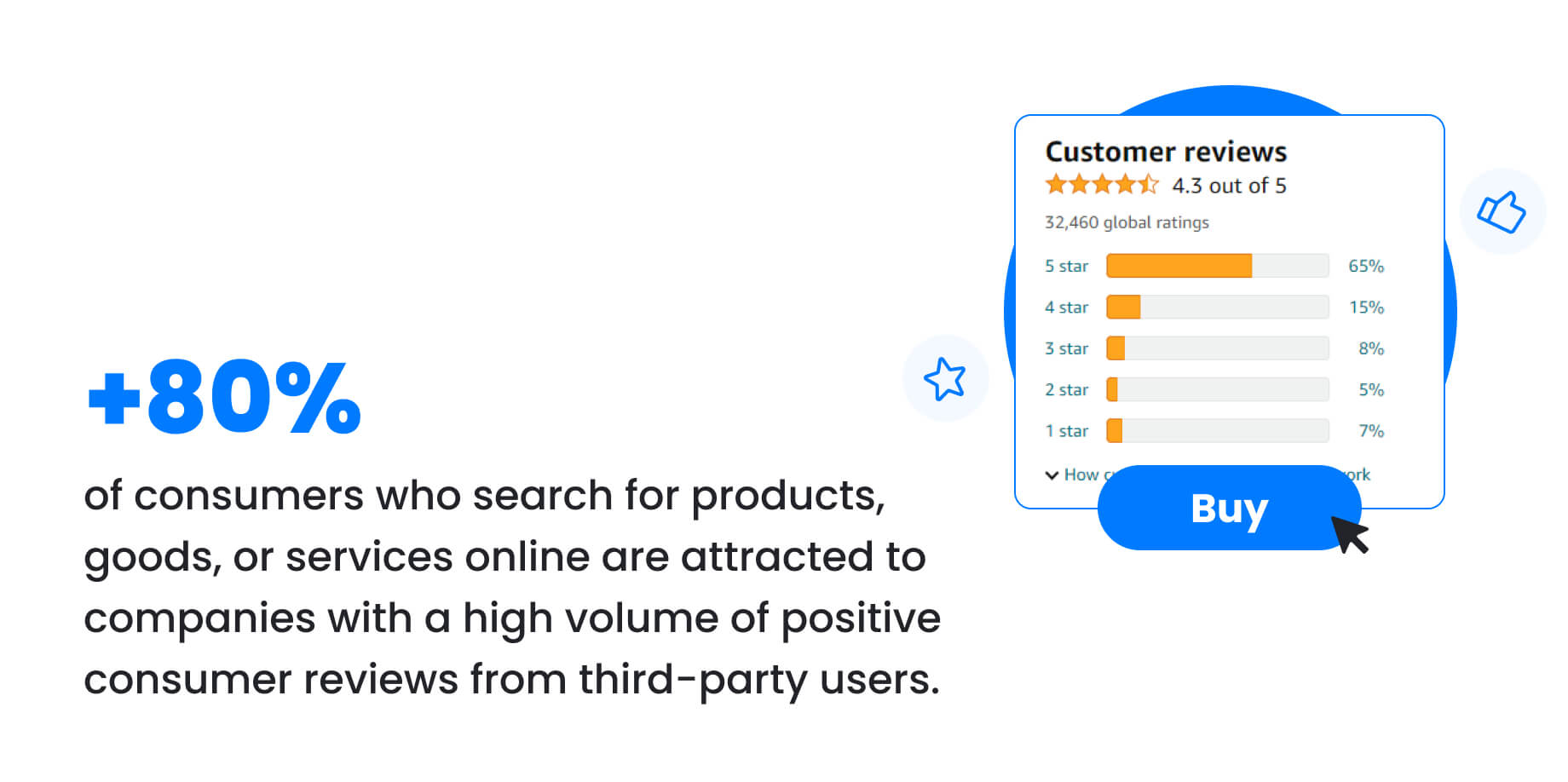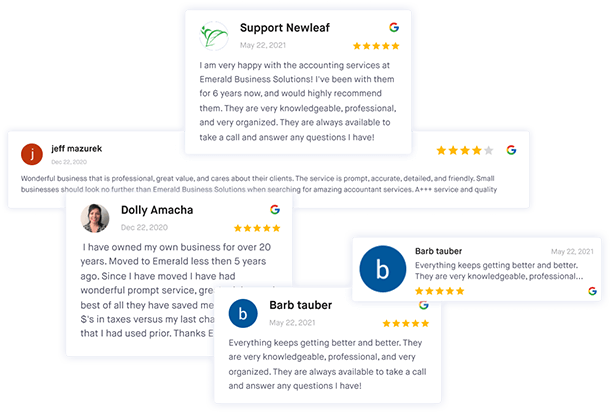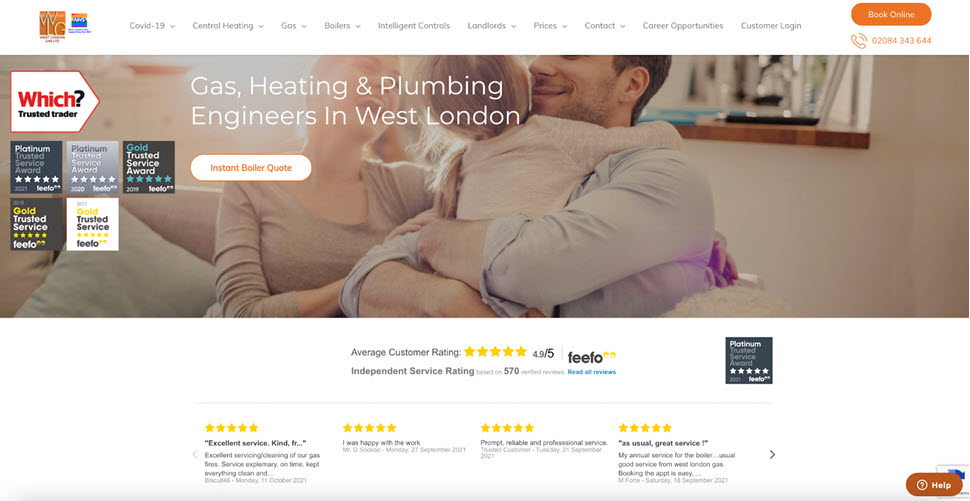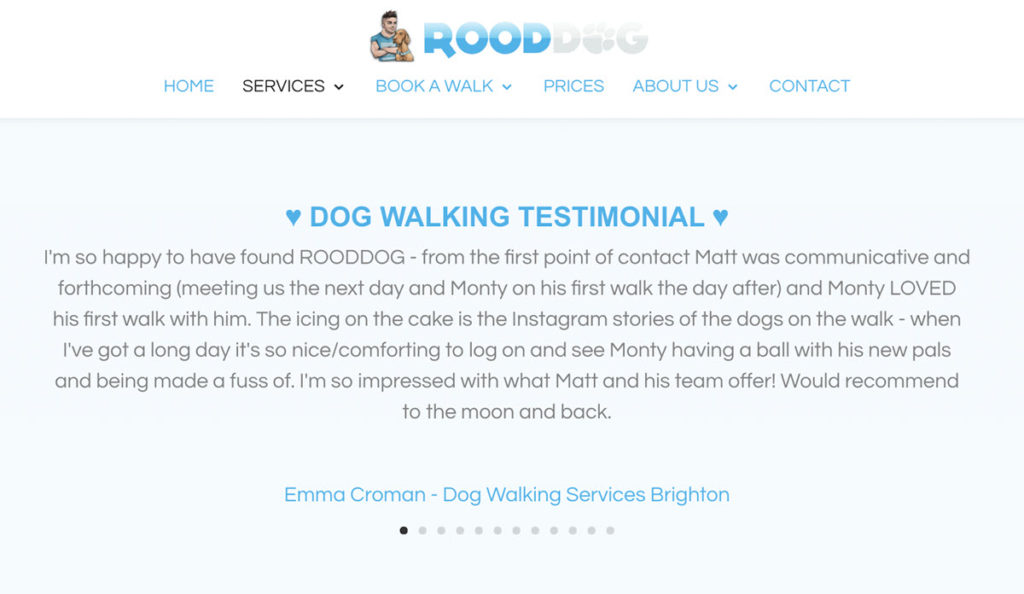Direct testimonials have a significant impact on the public perception of your business. Showcasing these customer comments is likewise an excellent marketing tool. But many business managers often wonder where to put testimonials on a website for maximum impact?
A satisfied customer endorsement can be a powerful tool to attract new customers and increase conversions. Knowing that other people had positive experiences with your services or products will make potential clients much more likely to try them out for themselves.
Displaying these testimonials on your website is an effortless way to generate trust among prospective buyers. However, like a good branding strategy, the placement of where to use testimonials is crucial.
In this article, we'll explain why client testimonials, especially those written on third-party review platforms like Google, Facebook, or Amazon, are compelling for building consumer confidence.
We'll explain why you should add reviews to your website - and other owned media platforms. We will also show you where to place these happy customer reviews for improved conversion rates.
Why should you add reviews to your website?
The most common testimonial written by customers online is a rating. This is typically several stars or a numerical value assigned to the quality of a company's service, products, or other offerings. A great small business review can influence new visitors' purchasing decisions.

Customer reviews in marketing provide social proof to those unfamiliar with your brand or business. In fact, more than 80 percent of consumers who search for products, goods, or services online are attracted to companies with a high volume of positive consumer reviews from third-party users.
For online marketing purposes, a few types of effective testimonials are more potent than others.
Direct product or service reviews
Direct product or service reviews are where customers explain in detail why they found a particular product or service to be especially helpful. You’ll find these posts on third-party review websites, case studies, social media pages, and a landing page.
These reviews will often have specific quotes from the customer praising the company, its products, and its services. Customers will often provide examples of how your offerings made their experience more accessible.
High authority website reviews
High-authority website reviews are where customer stories for your company on a third-party review platform. These platforms can include Google Business Profile, Facebook, Instagram, Tripadvisor, Zillow, and Amazon.
These reviews help businesses build trust with potential customers on those websites and increase their search engine visibility.
However, sharing these posts on your website helps build credibility among new website visitors.
Video Testimonials
Video testimonials are where customers provide a video review of your business. This may include a customer talking about their experience with the business or a recorded clip of them using the product or service.
These videos can be powerful for creating an emotional connection with potential customers and often have more impact than written reviews.

Manage online reviews with ease
Get more reviews, build trust, and grow your business with ReviewsOnMyWebsite.
Why is it important to place customer reviews right?
The placement of customer reviews is just as important as having them. If they are in a spot where potential customers don't see them, they won't impact conversions or website traffic much.
However, positive consumer reviews give new website visitors added trust in your brand. They can persuade a potential customer to hit that 'buy now' or book an appointment' button without regret. On the flip side, publishing reviews too often or in an annoying way can have the opposite reaction.
This is a significant reason why proper placement of the reviews is an integral part of the overall strategy.
6 Great places to feature a reviews section on a website
It's always best to put yourself in your customer's eyes - anytime you are building out a marketing strategy. Business managers often wonder what images, videos, colors, fonts, and other branding elements appeal to our consumers.
When placing a great testimonial on your website, it's vital to consider your target audience point of view. But it's just as important to look at it from a business perspective.
If you're going to promote consumer reviews on your website, here are four effective places to place them. Review this section, then consult with a web design or content marketing experts to integrate website testimonials on your platform.
1. Homepage

On your homepage, displaying customer testimonials has become the norm for a very logical reason - it is where you get the most website traffic. By presenting positive reviews up front, visitors may take notice and be encouraged to explore more of your website.
However, a homepage needs to tell consumers about your business, including what service or products you sell, what is unique about your company, where you offer these products or services, and other essential details.
Testimonials are intended to provide credibility and support to your content.
Here are a few great locations for placing testimonials on a homepage.
Homepage hero image or slider
Posting an excellent direct customer testimonial from real people on your home page's main image or slider is a great way to grab a new website visitor's attention.
Testimonial slider
This is commonplace on most websites. It'll be featured towards the bottom of the home page - after essential business details. It's not overpowering and helps drive the message of trust. You can also create a testimonial page section on your home page that drives visitors there.
Sidebar
Placing customer reviews in a sidebar is an excellent idea for desktop versions of your website. They typically don't display well on mobile versions, though.
2. About page

Your company about page needs to focus on explaining who you are. However, adding a few testimonials on this page doesn't hurt.
The best type of testimonial for this page is one that showcases the people that make up the organization. This helps to personalize your brand and show new website visitors that others are grateful to work with those in your organization.
Like the homepage, listing reviews in a testimonial slider down the page or main image is a great idea.
3. Product or services page

If a buyer is evaluating one of your offerings, sometimes all they require is that extra convincing to make a purchase. Believe it or not, nearly 90 percent of online customers put as much faith into reviews and testimonies as they do with advice from their loved ones.
So, it makes sense to capitalize on this by displaying positive customer feedback where potential purchasers make buying decisions?
But, like other pages - placement matters. Consider this idea.
If you have your services or products categorized, place your best review within that category. This is an example of a direct customer testimonial - or one articulating their feedback on a specific product or service.
A good tip is to add the testimonial near a pricing section or in association with your company logo. A dedicated testimonial from a product or service your customer offered - such as customer quotes, can influence them into a call to action.
Different types of testimonials that are general in nature don't hold as much value on this type of page. Instead, post product-specific testimonials on these service or product pages. Save these reviews for a testimonial section on other pages.
4. Call to action sections

Call-to-actions, such as contact or sign-up buttons, can be great prompts for visitors to convert. However, they don't always provide a convincing reason to click on the button instead of ignoring it.
And that's where customer reviews come into play.
More hesitant users will likely be encouraged to take the plunge if they read through positive experiences from other customers. After all, seeing tangible results from others provides an incentive that any regular "Call Now" CTA cannot offer alone.
You can also add a few testimonials on a contact page for added value.
5. Topical blogs
If you have a blog where you discuss topics around your services or products, it might not be a bad idea to place reviews at the bottom of those pages.
This is where contextual testimonials come into play. These are reviews where customers discuss their experiences with the topic that you are writing about on the blog page.
You can also place video testimonials within the context of the blog. Particularly if it's discussing a specific feature or solution your service provided the customer.
Don't overdo it, though. Add up to two testimonials on a blog post.
6. Dedicated reviews page

Sometimes, website visitors just want to hear about other people’s experiences. Bringing your reviews together in one dedicated place provides a launch pad for prospects to learn more about you and what you can do for them.
When you have multiple reviews from various customers, potential buyers are more likely to find a customer success story that resonates with them.
How many testimonials to include on a website?
The number of reviews you post on a website boils down to where you place them.
We suggest starting with 3 to 6 testimonial examples for each page where you post reviews and gradually increasing the number of reviews over time as more people start to review your business or product.
You want to ensure that you always provide the most relevant reviews, so update your review pages with the latest customer feedback.
Including too many reviews at once can turn off users and make them feel you need to try harder. So it's essential to start small and slowly add more as time passes.
Display reviews on your website with our Google reviews widget
Looking to showcase your top Google reviews on your website? You can use our Google reviews widget to do it in seconds.

Manage online reviews with ease
Get more reviews, build trust, and grow your business with ReviewsOnMyWebsite.
Key takeaways
Reviews are a great way to provide social proof for potential customers where your offering resonates the most.
By placing reviews on strategic pages of your website, you can significantly improve user experience and increase conversions. But, before you consider adding reviews to your website, it is vital to increase the number of positive reviews on high-authority websites like those we mentioned above.



